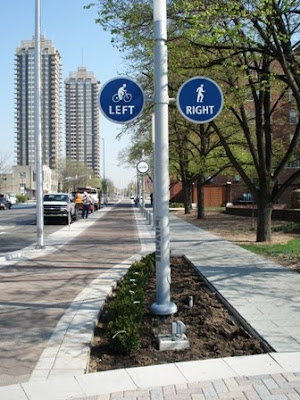If anyone has had the experience of traveling throughout Europe, you may have noticed a predominant feature in their center cities not found in typical American cities: pedestrian only thoroughfares. Many of these thin ‘streets’ have been around for decades, as European’s slowly took back their medieval centers and placed pedestrian access and connectivity in the forefront. Places like Paris, Copenhagen and Amsterdam have all created such places in their center cities, and, coupled with modern transit systems, have formed vibrant, provocative, and eclectic urban places.
On a recent trip to Crete (known to be conservative by European standards) I again noticed an abundance of pedestrian only streets. After talking to a few locals, it was brought to my attention that many of these pedestrian thoroughfares were relatively new to the large city of Iraklion, and that they had finally come on board to the notion of pedestrianizing their center city, following western and northern European standards. This got me thinking; if even the most conservative western European places are completely pedestrianizing their center cities, it’s only a matter of time before the United States does the same.
Actually, the United States is already beginning to come on board with this trend, proven with the recent news that New York City has been experimenting with pedestrian only plazas in Times Square and Herald Square. Even Indianapolis, Indiana has started a significant road diet, as seen in their downtown Cultural Trail, where road lanes are slowly disappearing and making way for multi-use, pedestrian/bike facility zones.
 Indianapolis’ Cultural Trail (photo from Indy Cultural Trail)
Indianapolis’ Cultural Trail (photo from Indy Cultural Trail)These trends indicate American’s are warming up to the idea of pedestrian only thoroughfares and ‘pedestrian malls’ in their downtown’s, an idea initially rejected by American’s in the 1960’s and 70’s. In 2009, America is continually becoming an urban-oriented society and our cities need to start planning for a pedestrian acceleration that I believe will occur in our urban centers.
Cincinnati needs to understand this and start planning for the future to stay competitive in attracting the creative class. Luckily for Cincinnati, the city already has an amazing built environment suitable for pedestrian-only thoroughfares and malls; found in amazing Over-the-Rhine. A number of the neighborhood’s streets, especially the east-west routes, are thin, intimate, and well connected, making them ideal for pedestrian only access.
So what can we do now to get ready for the pedestrianization acceleration that will eventually dominate the American urban landscape? In the immediate term, we can choke down car-centric streets like Liberty and Central, increasing sidewalk widths, adding bicycle lanes, and decreasing vehicular speeds. In the long term, we need to develop a strong multi-modal transportation system for the city.
Not surprisingly, pedestrian only zones cannot withstand themselves without being supported by a modern, multi-modal transportation system. You simply cannot expect people to live in a car free environment if they do not have attractive public transportation options. If Over-the-Rhine is ever going to become pedestrianized, we must promote modern transportation options such as the Cincinnati Streetcar. If Cincinnati doesn’t offer these options, good luck keeping up with the impending pedestrianization acceleration and good luck attracting the creative class! Please don’t rely on luck for a successful Cincinnati, please vote NO on Issue 9 on November 3rd.
Greg Meckstroth holds a Geography degree from the Ohio State University along with a Masters in Community Planning from the University of Cincinnati. Greg currently works as a planner with an urban design firm in Indianapolis.



